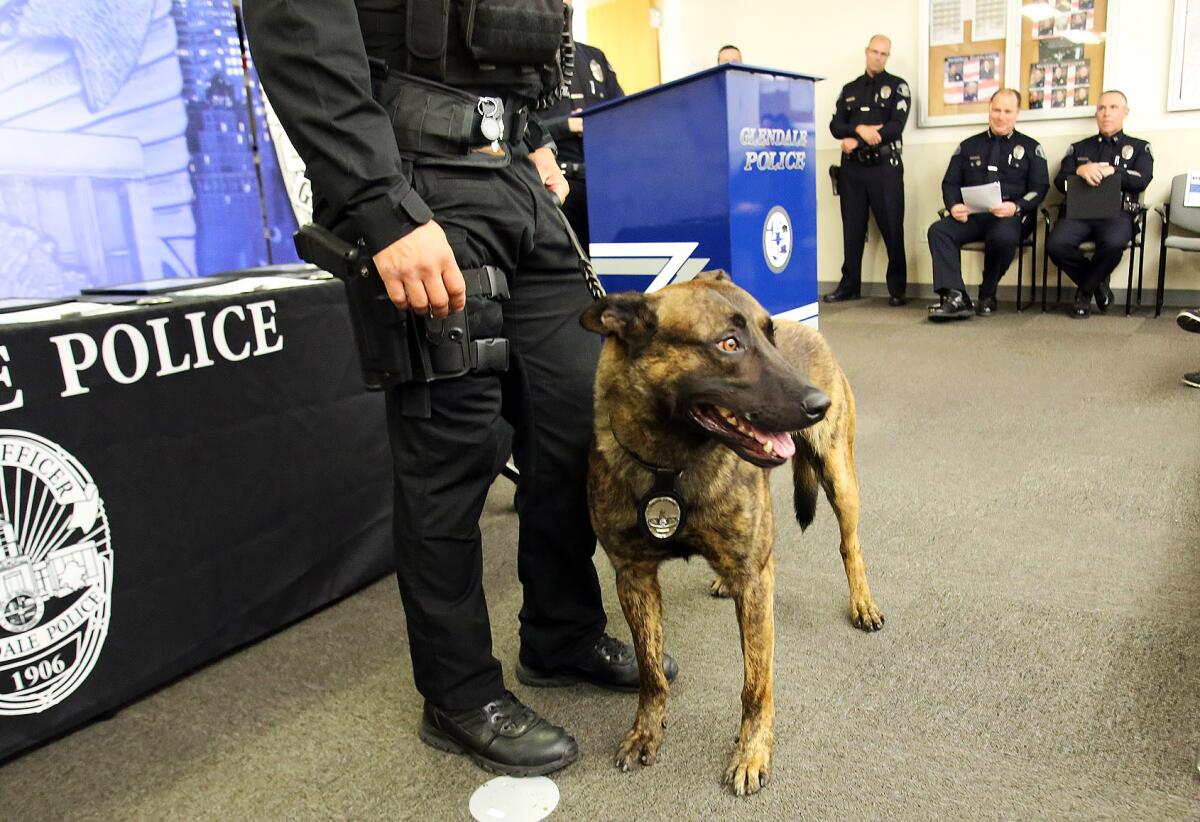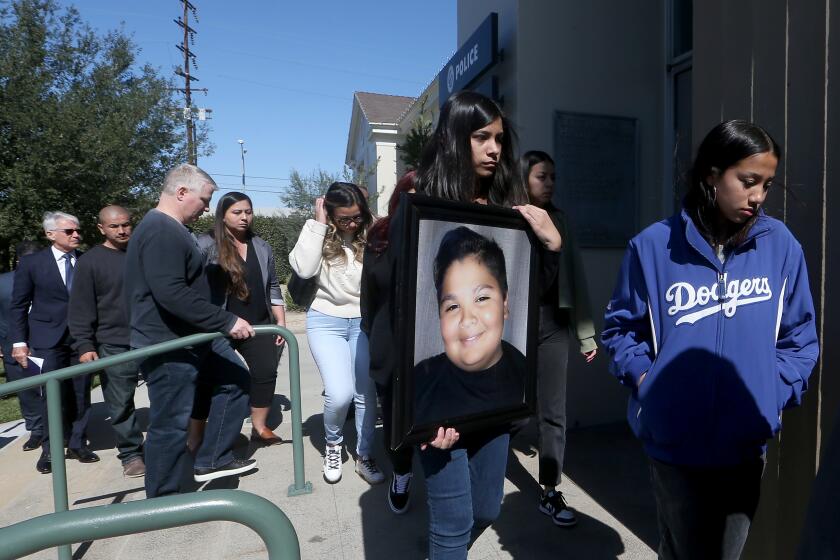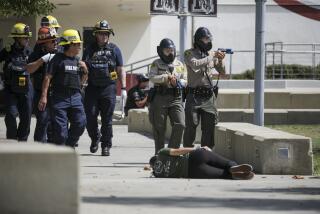California bill would ban police dogs from arrests and crowd control, citing racial trauma

Two California lawmakers have introduced a bill that would ban the use of police canines for arrests, apprehensions and crowd control, saying officers have long targeted and brutalized Americans of color with police dogs.
Assemblymembers Corey Jackson (D-Perris) and Ash Kalra (D-San Jose) introduced AB 742 to “end a deeply racialized and harmful practice that has been a mainstay in America’s history of racial bias and violence against Black Americans and people of color,” according to a news release.
“The use of police canines has inflicted brutal violence and lifelong trauma on Black Americans and communities of color,” Jackson said in the release. “This bill marks a turning point in the fight to end this cruel and inhumane practice and build trust between the police and the communities they serve.”
Injuries caused by police canines made up nearly 12% of the police use-of-force incidents that led to serious injury or death statewide in 2021, according to statistics released by the California Department of Justice.
Black and Latino people accounted for about two-thirds of the use-of-force cases involving canines.
One person was killed in Northridge early Thursday, authorities said, marking the second fatal collision during an LAPD pursuit in recent weeks.
ACLU California Action, a statewide advocacy organization of the American Civil Liberties Union, co-sponsored the bill.
“The use of police canines has severe and potentially deadly consequences for bite victims, especially communities of color,” said Carlos Marquez III, executive director of ACLU California Action. “This bill sets a new standard for California and marks an important step in ending this inhumane practice.”
The bill would not ban using police canines for explosives detection, search and rescue or narcotics detection, which don’t involve biting.
Law enforcement agencies in Southern California have modified their use of police dogs over the decades in response to complaints and lawsuits.
The Los Angeles Police Department’s canine unit was launched in 1980. By the end of the decade it was inflicting hundreds of bites a year, its officers were involved in a disproportionate number of shootings, and it was facing widespread accusations of racism, according to a Times report published in 1996.
Critics said the LAPD was using dogs with abandon in poor and nonwhite neighborhoods, dispatching them more frequently in those areas and injuring far more Black and Latino people than white people.
By the early 1990s, the LAPD began to reform its canine policies, and bites fell from 350 a year to about 35, according to the Times report.
Ricardo Castro was off duty at the time of the 2021 crash in South Gate. Law enforcement sources said his pickup reached up to 90 mph on city streets.
Last week, a man was hospitalized after an LAPD canine found him hiding in a crawl space during a search, police said Thursday.
On Feb. 10, officers from the 77th Street Division’s gang enforcement detail stopped a driver for a vehicle code violation, according to a police news release. The driver ran from officers, and canines were brought in to search for him.
During the search, the dog went into a crawl space underneath the house, where the man was hiding, and he was injured by the canine, according to police. The man got out of the crawl space and surrendered.
He was hospitalized and treated as a result of his injuries from the dog, authorities said.
More to Read
Sign up for Essential California
The most important California stories and recommendations in your inbox every morning.
You may occasionally receive promotional content from the Los Angeles Times.













